Remodeling your kitchen can feel like a daunting task, with so many choices to make. A vital decision you’ll make during your kitchen renovation is what style of cabinets you want. There are two main types: acrylic and lacquer. Both have their pros and cons, so how do you know which is right for you? In this article, we will go through the differences between acrylic and lacquer cabinets, as well as some tips on choosing the right type for your kitchen.
What is Acrylic Finish?
Acrylic finish is a tough paint-like material that creates an impenetrable seal over surfaces. It’s also known as a two-pack, two-part, and two-component acrylic finish. The first part of the two components is a lacquer base which provides color and protection, while the second part is an acrylic resin which gives toughness, durability, and adhesion to the surface. Acrylic finishes are generally used on kitchen cabinets because they provide superior protection against heat and moisture. [1]
Types of Acrylic Paint
Using acrylic paint for cabinets is an affordable and easy way to refresh the look of your kitchen.
Acrylic-based paints are generally divided into two categories, water-based (latex) and oil-based:
- Water-Based Acrylic Paint. This type of paint offers a wide range of colors you can mix and match to find the perfect hue for your space. It’s also low in cost, fast drying, and easier to clean up with soap and water. However, it’s not as durable as oil-based paint and tends to require more frequent touch-up painting;
- Oil-Based Acrylic Paint. Oil-based acrylic paints offer more durable finishes than their water-based counterparts. Oil-based acrylic paints are also much more resistant to fading from sun exposure and won’t wear down as easily. They can be a bit messier and take longer to dry, but the end result is well worth it;
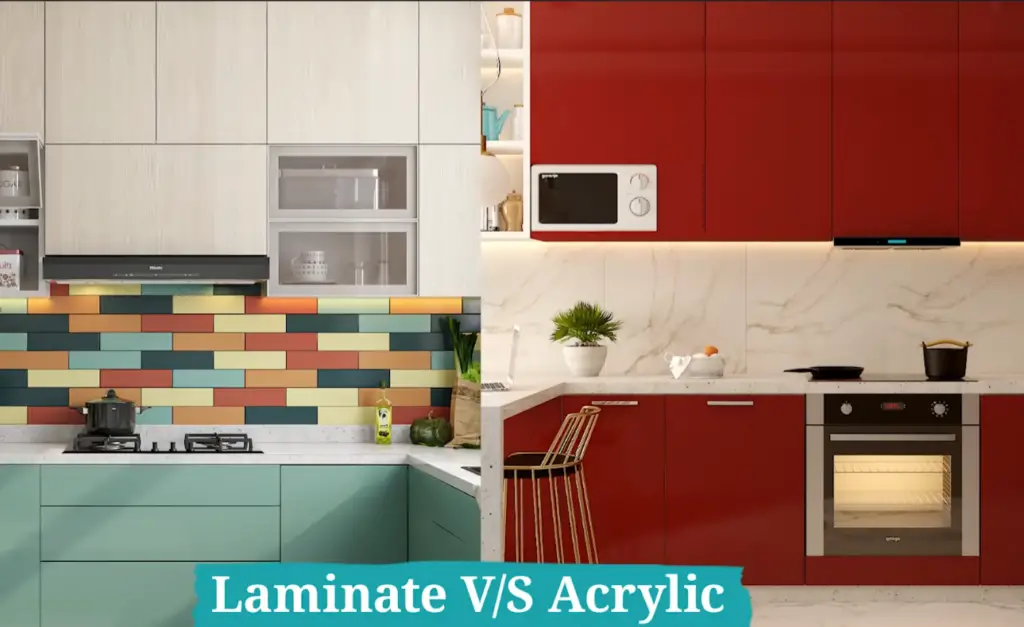
What is a Lacquer Finish?
Lacquer is a popular finish for cabinets because of its durability. The finish is created by combining several layers of resin-based material, which acts as a protective sealant against heat and humidity. It’s also relatively easy to clean and maintain. The downside to lacquer finishes is that they can be prone to staining or discoloration over time if exposed to too much moisture or high temperatures.
Because it is made from resin, lacquer finishes often look glossy or shiny when first applied. This glossy appearance makes them very aesthetically pleasing but may not fit with all design styles depending on the room. Another potential issue with lacquer finishes is that they are slightly more difficult and time consuming to apply than acrylic finishes.
Types of Lacquer Paint
Lacquer comes in two main types, nitrocellulose and acrylic lacquers. Nitrocellulose is a type of paint that has been around since the 1920s, and it dries quickly to form an extremely durable finish. It requires multiple coats to achieve the desired level of shine. Acrylic lacquer is a newer innovation that dries quickly and offers excellent gloss retention with just one coat. However, it can yellow over time due to UV exposure. Regardless of the type of lacquer you choose for your kitchen cabinets, both will require maintenance such as polishing or waxing every few years to keep them looking their best.
Nitrocellulose Lacquer
This type of finish provides an exceptionally smooth surface but can be prone to yellowing over time, especially when exposed to sunlight. Nitrocellulose lacquer is more expensive and often requires multiple coats in order to achieve the desired level of protection and shine.
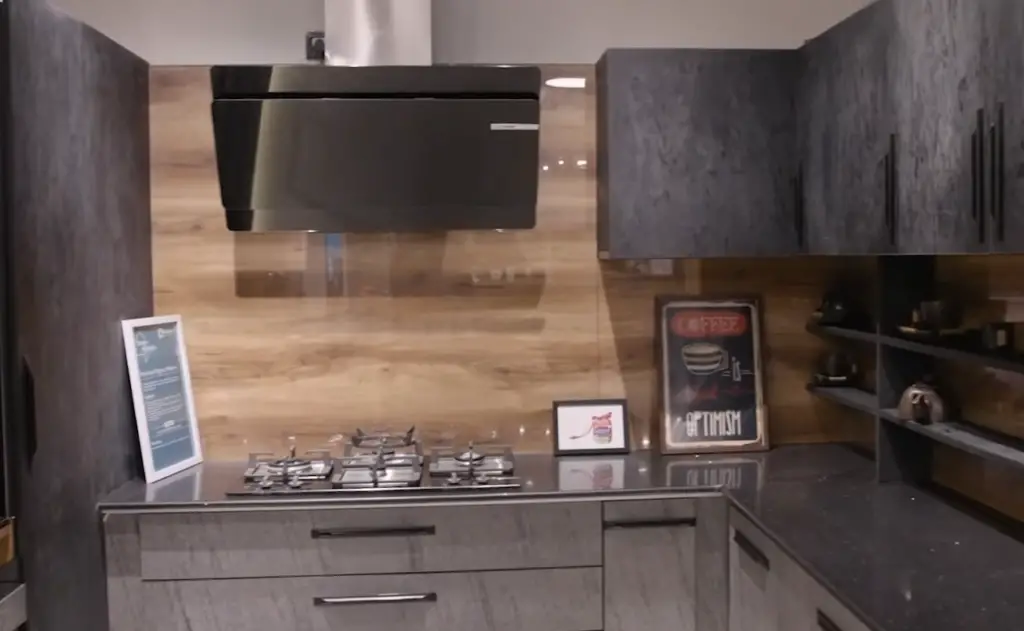
This type of lacquer typically requires professional application as even experienced DIYers may struggle with the technique of spraying the finish. It also requires specialized equipment and safety precautions to ensure proper application and a safe working environment.
Nitrocellulose lacquer is an excellent choice for kitchen cabinet finishes but may require more time and effort in order to achieve the desired results. This type of lacquer may be worth considering if you’re looking for a classic look with great protection.
Catalyzed Lacquer
Catalyzed lacquer is a type of paint that’s more durable than conventional paints. It has a harder, longer-lasting finish, making it ideal for kitchen cabinets. Catalyzed lacquer is also known as conversion varnish, post-catalyzed or pre-catalyzed lacquer.
Like acrylic paint, catalyzed lacquers are sprayed on and can create a smooth and glossy finish. They provide superior scratch resistance and the ability to be refinished multiple times without the need for sanding down the surface. The biggest downside of catalyzed lacquer is its strong odor and toxicity — it requires proper safety equipment when being applied. It’s also much more expensive than other types of finishes.
Catalyzed lacquer is an excellent choice for kitchen cabinets due to its long-lasting finish and scratch resistance. Its drawbacks include a strong odor and the need for more caution during installation, making it more expensive than other finishes. Additionally, it requires multiple layers of application, which can make the process time-consuming.
Water-Based Lacquer
When it comes to protecting and beautifying your kitchen cabinets, one of the choices you have is between water-based lacquer and acrylic paint. While both products will be effective at creating a lasting finish, there are some advantages and disadvantages to each.
Pros and Cons of Acrylic and Lacquer Finish for Kitchen Cabinets
When it comes to kitchen cabinets, two of the most popular options are acrylic and lacquer finishes. Deciding between them can be tricky as both have pros and cons that should be weighed carefully:
- Acrylic: An acrylic finish is usually cheaper than a lacquer one and dries quickly, making it easier to apply. However, this type of finish can easily become scratched or dented with normal wear and tear, so it may not be suitable for those who need high levels of durability. Additionally, acrylic tends to discolor over time unless UV-stabilized coatings are used;
- Lacquer: Unlike acrylic, a lacquer finish is much more durable and resistant to scratches and dents; however, it is more expensive and takes much longer to dry. Lacquer is also more difficult to apply, so it’s not ideal for the DIY enthusiast. Additionally, lacquer can be toxic when inhaled or ingested, so extra care must be taken when using this type of finish;
Ultimately, both acrylic and lacquer finishes have their advantages and disadvantages. Consider your budget and desired durability level before making a decision about which one is best for your kitchen cabinets!
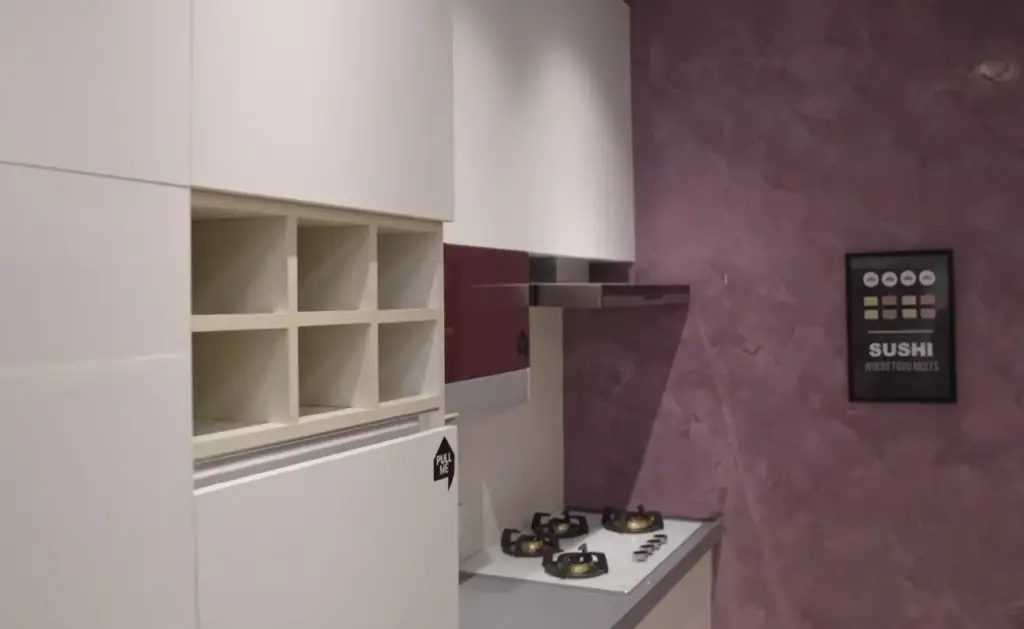
What’s the Difference between Lacquer and Acrylic for Kitchen Cabinets?
If you’re remodeling your kitchen and considering new cabinets, you may have come across lacquer and acrylic as two of the possible options. But what exactly is the difference between them?
Lacquer is a type of paint that can create a glossy, shiny finish when applied to furniture and other surfaces. It dries quickly and forms an extremely durable surface that resists chipping, peeling, staining, and fading over time. Lacquers are also typically quite affordable compared to other cabinet finishes.
Acrylic on the other hand is more like a plastic coating that provides extra protection for your kitchen cabinets. It’s often used in combination with paint for added strength, smoothness, and durability. Acrylic is water-resistant, which makes it ideal for kitchen cabinets that may come in contact with water or moisture. It’s also very easy to clean and maintain.
While acrylic paints are easier to remove, lacquer paints are more durable and will last longer; however, if you try to remove them, they can damage the kit’s surface. They are also more expensive than acrylics, depending on the quality and brand of lacquer you choose. [3]
It really comes down to personal preference when it comes to choosing between lacquer and acrylic for your kitchen cabinets. Both materials can offer a great look and increased durability, so it’s important to consider your budget as well as the overall design of your space before deciding which material is right for you.
Ultimately, both materials will require some care in order to maintain their attractive looks over time. Cleaning regularly with gentle detergents or cleaners specifically designed for kitchen cabinets will help keep them looking beautiful — no matter which material you choose!
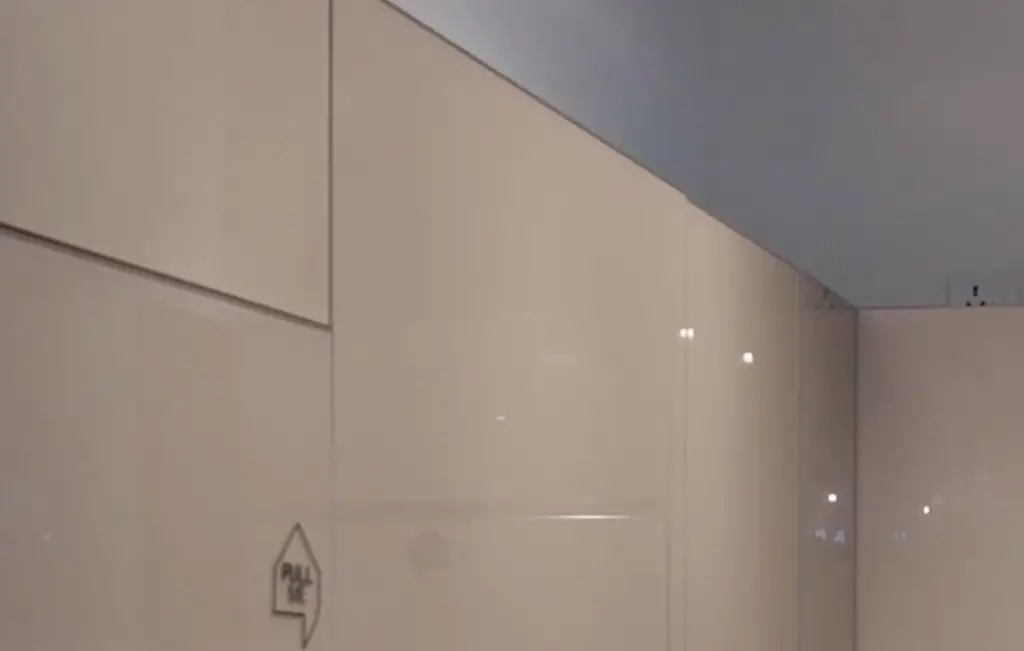
What’s the Best Finish for Your Kitchen Cabinets?
When shopping for kitchen cabinets, you’ll likely come across two types of finishes: acrylic and lacquer. Both offer their own unique advantages and disadvantages – so how do you decide which one is the best for your kitchen?
To make a well-informed decision, let’s dive into what each type of finish has to offer:
- Acrylic Finish. Acrylic is a resin-based paint that creates a glossy, non-porous surface. It’s also easier to maintain than lacquer because it resists water and other stains better, making it an ideal choice in humid or wet environments like kitchens. With its strong resistance to scratches, chipping, and fading, acrylic can retain its beautiful sheen and luster for many years;
- Lacquer Finish. Lacquer is a type of paint that also delivers a glossy finish, but it dries more quickly than acrylic. It’s very durable and resistant to wear – making it an excellent choice for high-traffic areas like kitchens. While lacquer is easy to clean, it can start to chip or fade over time if you don’t follow the manufacturer’s instructions;
When choosing between the two finishes, consider your lifestyle and how much wear and tear your cabinets will endure over time. If you have children or pets who frequently use kitchen cabinets, then acrylic may be a better choice as it offers greater protection against scratches, bumps, and other damages. On the other hand, if you’re looking for a finish that will last without much maintenance, then lacquer may be more suitable.
Which Finish for Kitchen Cabinets is Suitable for American Kitchens?
When it comes to making the right choice for American kitchen cabinets, there are a few things to consider. Acrylic and lacquer finishes both have their pros and cons when it comes to durability, cost-effectiveness, maintenance needs, and overall look.
Acrylic is a popular finish for modern kitchen cabinets in the USA because of its glossy, clean look. It’s also highly durable and easy to maintain since it doesn’t scratch or yellow over time as other finishes might. On the downside, acrylic can be relatively expensive depending on the quality level and brand when compared to other finishes. It can also show dust easily so regular cleaning may be needed.
Lacquer has similar qualities but with one major difference — it is a lot more affordable than acrylic, making it the top choice for budget-conscious consumers. It’s also highly durable and easy to maintain, though it may need more frequent touch-ups over time if you want to keep your cabinets looking shiny and new. The downside is that lacquer can be prone to scratches, so you’ll have to be careful with handling kitchen items in order to keep its finish intact.
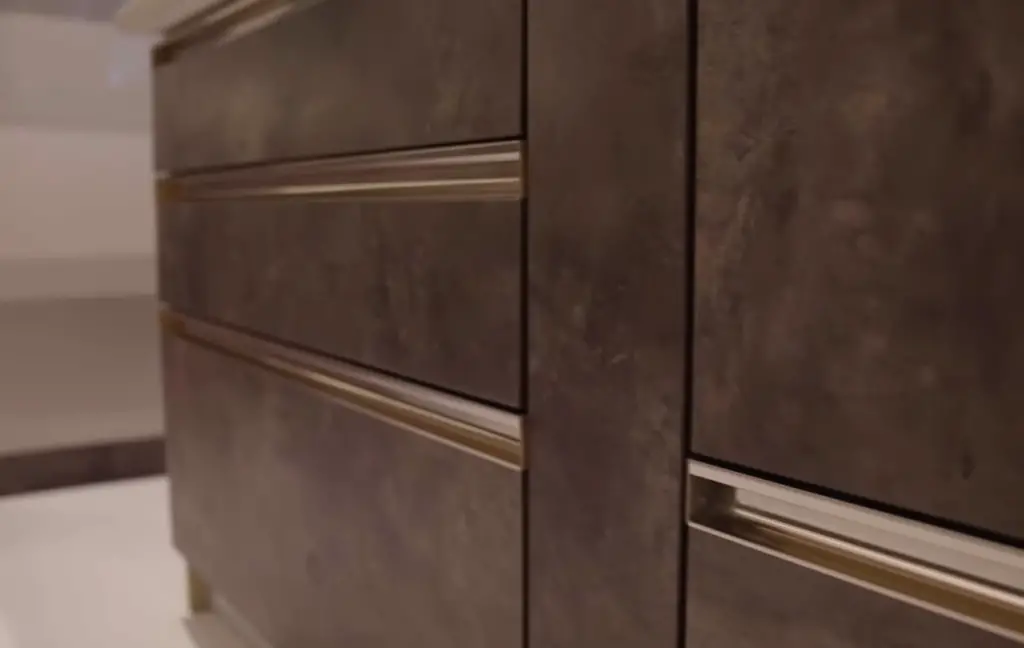
Ultimately, the best option for American kitchen cabinets will depend on personal preference as well as budget considerations. Acrylic or lacquer finishes are both great choices depending on the look you’re trying to achieve and the price point you’re aiming for. Whichever one you pick, make sure that regular cleaning and maintenance are done to keep your cabinets looking as good as new for years to come.
FAQ
Which finish is best for kitchen cabinets?
When it comes to choosing the right finish for kitchen cabinets, your choice will largely depend on personal preference. Both acrylic and lacquer are viable options that offer a variety of benefits. Acrylic is known for its durability and easy maintenance, while lacquer provides a glossy, striking appearance and is more resistant to scratches and dents. Ultimately, it’s up to you to decide which one you like best!
Is acrylic good for kitchen cabinets?
Yes, acrylic is a great option for kitchen cabinets. It is highly durable and has excellent heat resistance, making it ideal for kitchens that are exposed to high temperatures. Acrylic also provides a glossy finish that can make your kitchen look brighter and more vibrant. Additionally, because it’s nonporous, acrylic is easy to clean and maintain. [4]
However, there are some drawbacks to using acrylic on your kitchen cabinets. First of all, it can be quite costly compared to other materials like wood or laminate. Secondly, since acrylic is so smooth and sleek looking, it does not take well to dings or scratches — it will become obvious over time if you don’t keep your cabinets in good condition.
Which material is most durable for kitchen cabinets?
If your kitchen cabinets need to withstand a lot of wear and tear, then acrylic is the best choice. It is highly resistant to scratches, dents, and moisture damage. While lacquer can be scratched or chipped if you’re not careful with your kitchen cabinets, acrylic is much more durable. Acrylic also resists fading better than lacquer so it won’t lose its luster over time. However, this durability comes at a cost – acrylic may be more expensive than lacquer depending on the specific finish you choose for your cabinets.
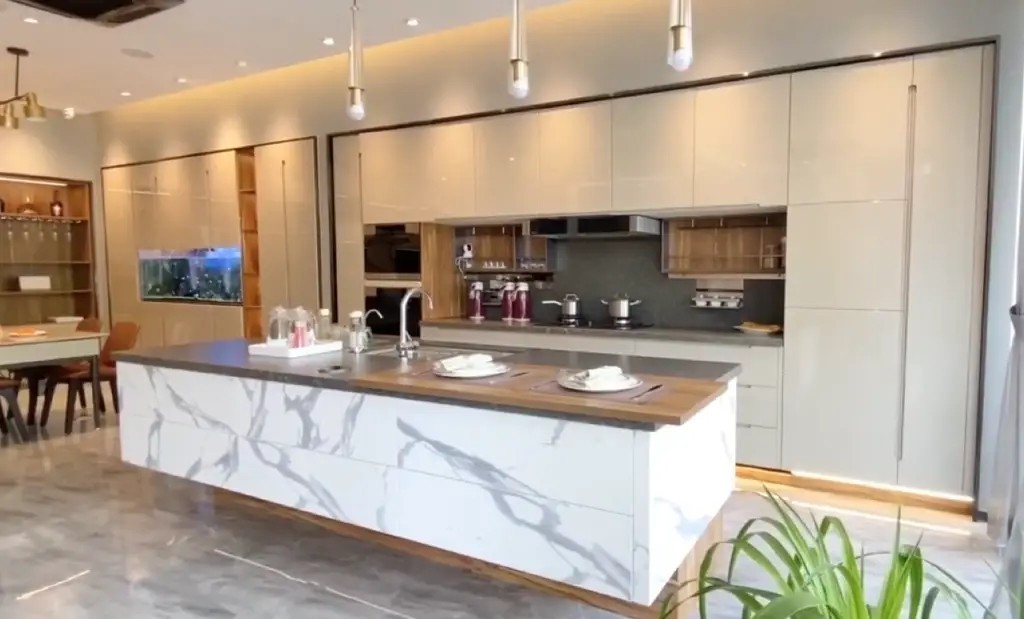
At the end of the day, both materials make great options when it comes to kitchen cabinets – it all depends on what kind of look you’re going for and how much maintenance you’re willing to do. Acrylic may be more expensive but its durability and low maintenance requirements can save you time and money in the long run. However, if you prefer a cheaper option that has a more classic feel, then lacquer might be right for you.
How long do acrylic cabinets last?
Acrylic cabinets are incredibly durable and can last for many years. They are scratch and heat-resistant, making them an ideal choice for heavy-duty use. The only downside is that acrylic can be easily stained by oil or other kitchen liquids so it requires regular cleaning and maintenance. A good quality sealant applied to the cabinet surfaces can help protect against this issue and extend their lifespan even further. [5]
Overall, with proper care and maintenance, acrylic cabinets can last for many years and provide a beautiful look to your kitchen. The glossy surface is also easy to clean and maintain, making it a great option for busy kitchens.
Useful Video: Acrylic Finish vs Laminate Finish Which is Better for Kitchen Cabinets? Cost, Maintenance & Usage
Conclusion
In the end, both acrylic and lacquer kitchen cabinets have their own strengths and weaknesses that you should consider when you are trying to decide which one is best for your kitchen. Acrylic cabinets tend to be more durable and scratch-resistant, but they can also be expensive and difficult to repair if damage does occur. On the other hand, lacquer cabinets tend to be cheaper, but they are also more prone to scratching and other forms of wear and tear over time. Ultimately, it is up to you to decide which one will work best for your kitchen design and lifestyle. Consider each option carefully before making a final decision. With the right care and maintenance, either choice can help create a beautiful kitchen that you can enjoy for years to come.
Good luck!
References:
- https://www.livspace.com/in/magazine/kitchen-cabinets-finishes-acrylic-laminate
- https://booth7.com/difference-between-lacquer-and-paint-for-kitchen-cabinets/
- https://leisureguided.com/acrylic-vs-lacquer/
- https://www.livspace.com/in/magazine/materials-101-acrylic-kitchen-cabinets
- https://designingidea.com/acrylic-kitchen-cabinets/





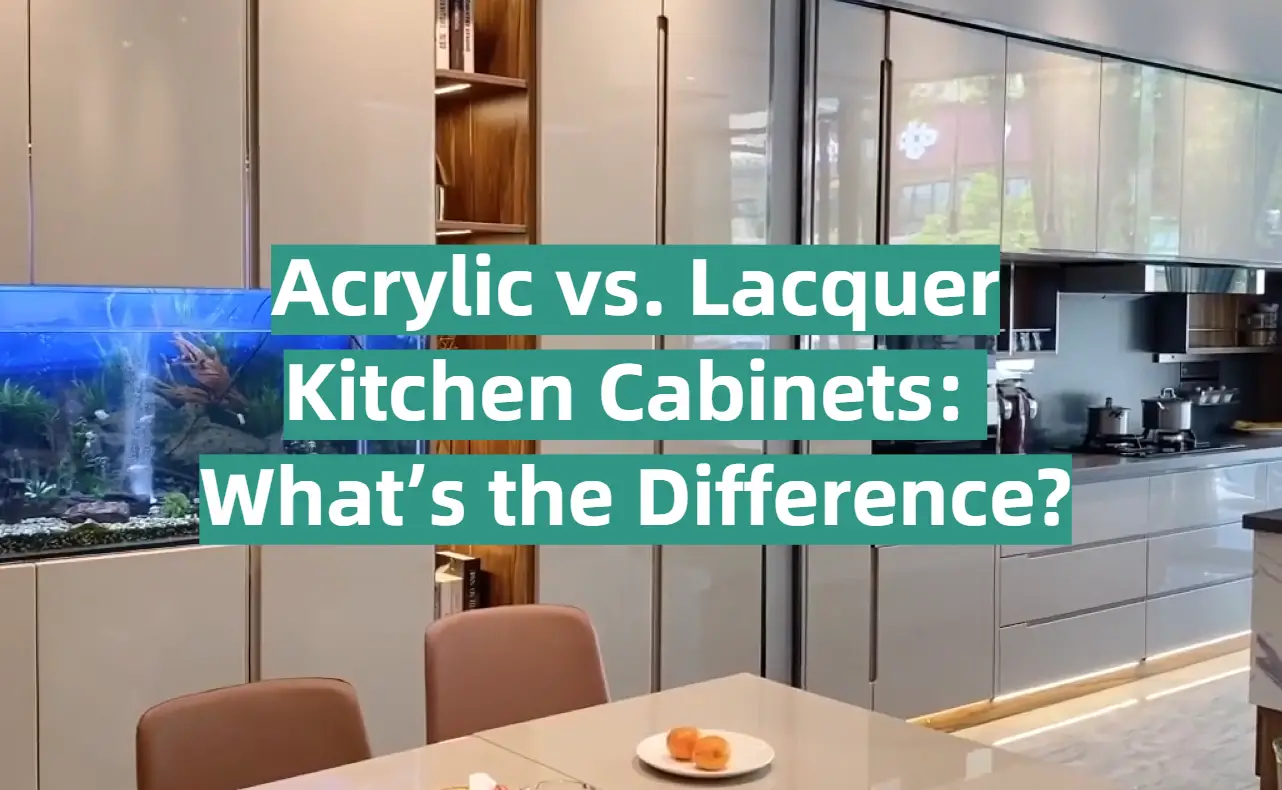





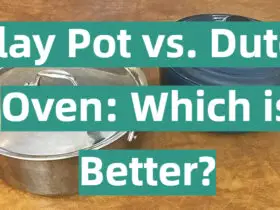

Leave a Reply